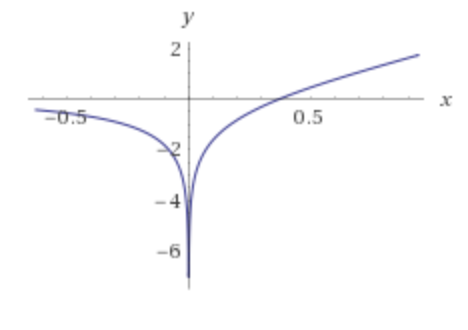You are viewing an old version of this page. View the current version.
Compare with Current
View Page History
« Previous
Version 32
Next »
@wikipedia
Two different functions of real argument
x \in \mathbb{R} are called this way:
| (1) |
{\rm Ei}(x) = - \int_{-x}^{\infty} \frac{e^{-\xi}}{\xi} \, d\xi |
|
| (2) |
{\rm E_1}(x) = \int_{x}^{\infty} \frac{e^{-\xi}}{\xi} \, d\xi |
|
which are related to each other as:
| (3) |
{\rm Ei}(x) = - E_1(-x) |
There is a trend to moving from
\rm Ei definition (which was dominating in the past) towards
\rm E_1 which becomes more and more popular nowdays.
|
Fig. 1. A sample graph of
y ={\rm Ei}(x) |
Approximations
| |
|---|
| (4) |
{\rm Ei}(x) = \gamma + \ln |x| + \sum_{k=1}^\infty \frac{x^k}{k\cdot k!} |
|
| (5) |
{\rm Ei}(x) = e^x \, \left[ \frac{1}{x} + \sum_{k=2}^\infty \frac{(k-1)!}{x^k} \right] |
|
where
\gamma = 0.57721... is Euler–Mascheroni constant
|
|
| |
| (6) |
{\rm Ei}(-x) \sim \gamma + \ln x |
|
| (7) |
{\rm Ei}(x) \sim \gamma + \ln x |
|
Application
The
\rm Ei-based function:
| (8) |
{\rm w}(t, r) = E_1 \left( \frac{r^2}{4 \, t} \right) = -{\rm Ei} \left( - \frac{r^2}{4 \, t} \right) |
defines a solution planar axial-symmetric diffusion equation:
| (9) |
\frac{\partial {\rm w}}{\partial t} = \frac{\partial {\rm w}^2}{\partial^2 r} + \frac{1}{r} \frac{\partial {\rm w}}{\partial r} |
| |
| (11) |
{\rm w}(t, r=\infty) = 0 |
|
| (12) |
0 <= {\rm w}(t, r) < \infty \, , \ \forall (t,r) \in D = \{ t \geq 0, r>0 \}
\subset \mathbb{R} |
|
and is widely used in radial heat-mass transfer simulations.
References
https://www.wolframalpha.com/input/?i=Ei(x)
